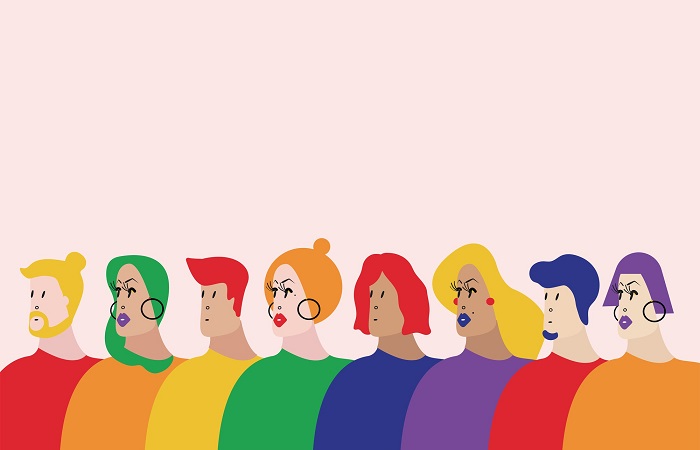
Table of Contents
In the ever-changing world of marketing, businesses constantly try to connect with their target audience in a meaningful and impactful way. However, one outdated approach that has remained for far too long is gender-based marketing which is definitely bad for business and i will explain why. This strategy involves customized advertising, products, and services specifically towards either men or women, often relying on stereotypes and reinforcing societal norms.
But here’s the truth: Gender-based marketing is not only ethically questionable, but it can also be harmful to businesses in today’s diverse world. As consumers become increasingly aware and vocal about issues related to gender equality and representation, businesses need to adapt their strategies to reflect these changing attitudes. By relying on outdated gender roles and stereotypes, companies risk dividing a significant portion of their potential customer base and missing out on valuable opportunities for growth.
Besides, gender-based marketing perpetuates harmful stereotypes and reinforces artificial divisions between men and women. It limits creativity, restricts individual expression, and fails to acknowledge the fluidity and complexity of gender identities. In today’s society, where inclusivity and diversity are championed, businesses that stick to fixed gender roles risk being left behind.
Fortunately, many modern companies have recognized the issue of gender-based marketing and are leading the way towards a more inclusive future. They understand that embracing diversity and challenging traditional notions of gender can open up new markets, drive innovation, and bring up stronger connections with customers.
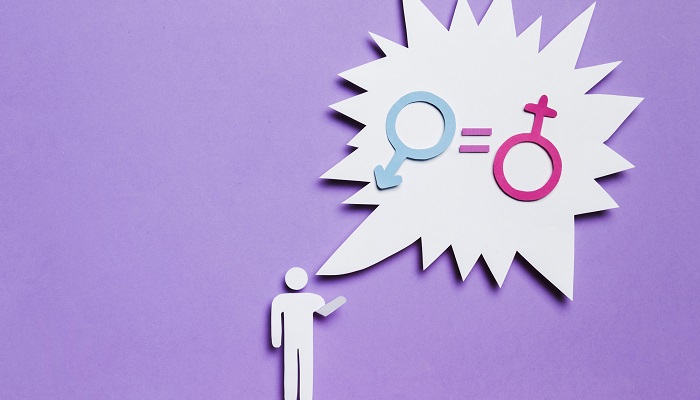
In this blog post, we will explore strong reasons why gender-based marketing is bad for business. We will discuss how it makes customer engagement difficult, limits market reach, and prevents creativity within organizations. Moreover, we will showcase real-world examples of companies that have used gender-based marketing strategies to show how poor gender could be as a marketing target.
So, join us as we dive into the world of gender-based marketing and uncover why it’s time to leave these outdated practices behind, for the good of businesses and society as well.
What is gender in market segmentation?
The world isn’t black-and-white, it’s pink and blue. It all starts from the moment we’re born. Everything’s planned as pinky stuff for girls and violent-cold-bluey stuff for boys. It’s market segmentation. The theory goes that dividing consumers up into smaller groups is good for business. And what easier way to divide humanity by gender? You know, it hasn’t always been this way; in fact, it used to be the other way round. Pink being a more decided and stronger color is more suitable for the boy, while blue which is more delicate and dainty is prettier for the girl.
By the early 1970s the split between boys toys and girls toys seemed to be so obvious. Today, that’s all changed. In simple words, the companies who make boys or girls specified products try to trick the boy/girl into buying the blue/pink stuff instead of stuff instead of what they really want for themselves. They worked out that by segmenting the market into narrow demographic groups, they can sell more versions of the same toy. That’s why Lego ads were specified for boys, but now it’s advertised for girls, too. This move tripled the number of girls using Lego and scored the company a 25% increase in global revenue.

But market segmentation isn’t just for kids. By making two versions of otherwise identical products, celebrity slim can sell many more slim shakes and hairdressing formulas can sell more hair pills and Gillet can sell more razors, etc. And it’s not just about trying to sell more. It’s about trying to charge more, too.
For example, we will dive into gender segmentation for body glide. The body glide for men is be great for feet, thighs, and upper bodies in the advertisement. But the body glide for ladies is great for feet, thighs, and BRAS; like women don’t have upper bodies:). There’s absolutely no difference between these two products and the ladies’ body glide costs nearly 60% more per gram than the original. Because according to body glide, we ladies need a small product to carry along conveniently, as if there’s no way a woman could carry a normal body glide!
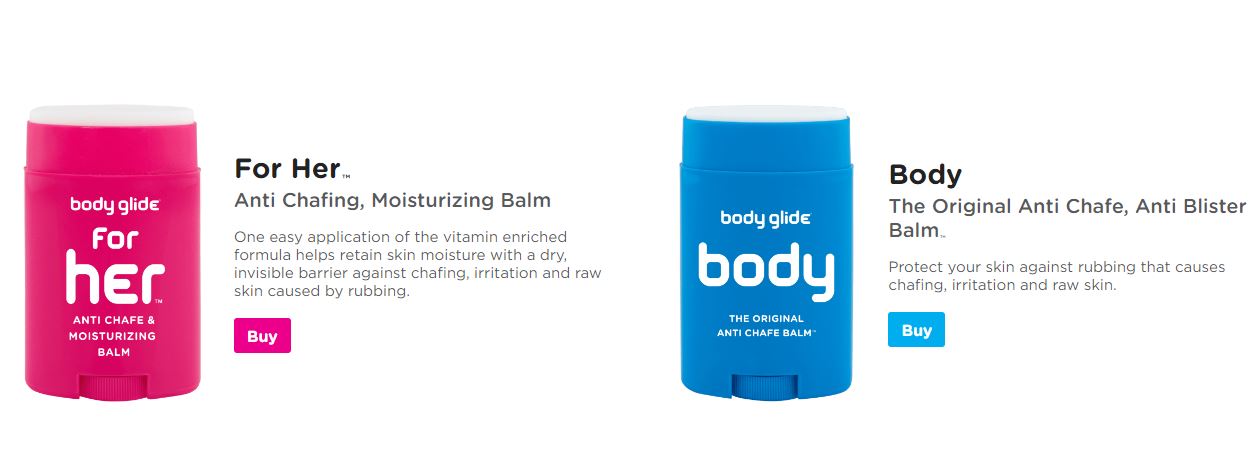
You don’t have to be a loop using triathlete to feel the rub of gender marketing. It comes with everything, from shaving cream and depilatory cream to styling powder and eye gel. We might not even realize it’s happening; because we only look at our section of the store and ignore anything that’s obvious to us. It’s also not just about the colors. Companies also use shape, texture, packaging, logos, verbiage, graphics, sound, and names to define the gender of a brand. Lighter colors, smoother edges, floral motifs, and softer lines picture ladies. And darker colors, harder lines, square shapes and science picture men. That’s why a Pack of pads for women features a pretty little flower of wee drops. While the men’s package has a grid and arrows on it and very specific measurements.

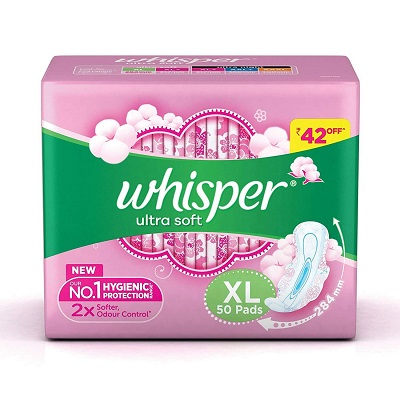
It’s also not just about the colors. Companies also use shape, texture, packaging, logos, verbiage, graphics, sound, and names to define the gender of a brand.
Market segmentation can backfire. Gender contamination is where a product is so strongly for one gender. The other gender refuses to buy it. Why don’t they just call it the cooties effect?We’re grownups now. Anyway, it’s much easier to get women to buy men’s stuff than it is to get men to buy women’s stuff. For example when Dove entered the male skincare market, they realized:
“The name, Dove, lacks macho mystique, especially when rendered in slender italics and accentuated with a stylized bird logo.“
So, they paid for printing MEN+CARE in stand-up capitals and by the use of a battleship gray background. They even squared off the curves of the iconic soap bars to give it a more manly appearance. Therefore, in one year they gained millions of customers in 30 countries with $150,000,000 in sales just by reminding men that THEY’RE MEN.
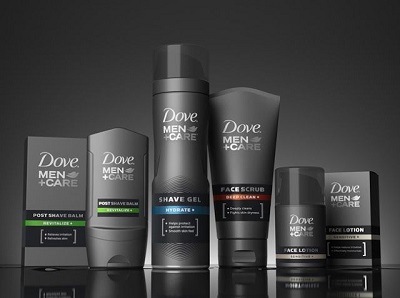
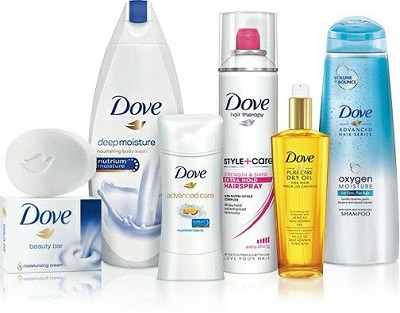
Dove isn’t the only brand that does this. You will also see products with really stupid man names to help encourage men to splash their manhood; like Broga, Brogurt, Brotox, Guyliners, Mandle, etc.
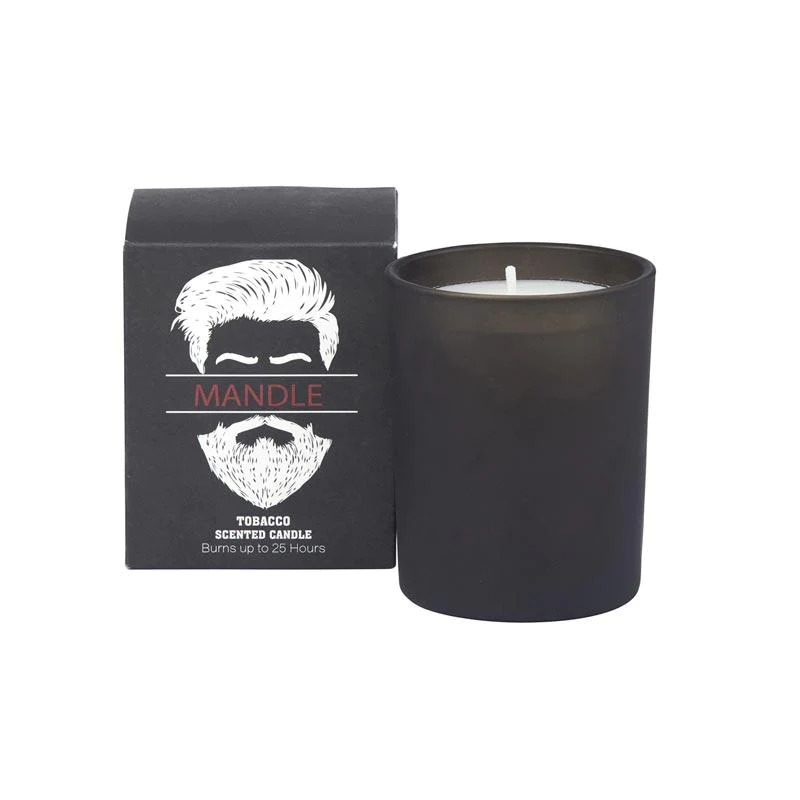
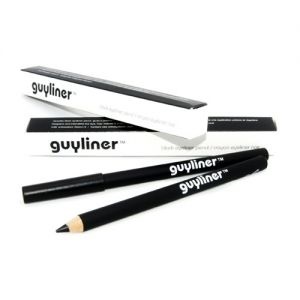

Men are not the only ones that are patronized. A couple of years ago Fujitsu launched a computer for women. The floral kiss laptop for users with long fingernails came with scrapbooking and horoscope software, zirconia adornments, and a floral motif.


And for women who couldn’t use a computer, Bic brought out a pen. Funny, right?
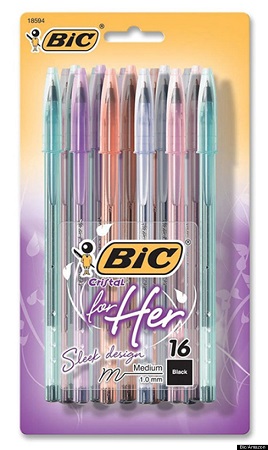
Today, we have Bürgen bread for women’s well-being. They can call this because they claim they can maintain breast health. They don’t mention mental-being though, despite also claiming it may help maintain profit health.
Can’t we all just stop dividing people? Uneliver found a way to bring the genders together and shaft them both. To Unilever adjust their French brand, Signal White Now toothpaste, started out for the whole family, but then they launched a glittery version for women and followed up with a manish version for men; because they said it will contribute to driving the market up, and it did (the women version is 70% more expensive).
There are some things you can do; ask yourself: “Am i buying this just because it said it’s for my gender? It might be worth checking the other half of the range. If you were willing to put up with grey packaging and straight lines and don’t need your shampoo bottle to reassure you that YOU’RE A MAN, You could save a fortune!
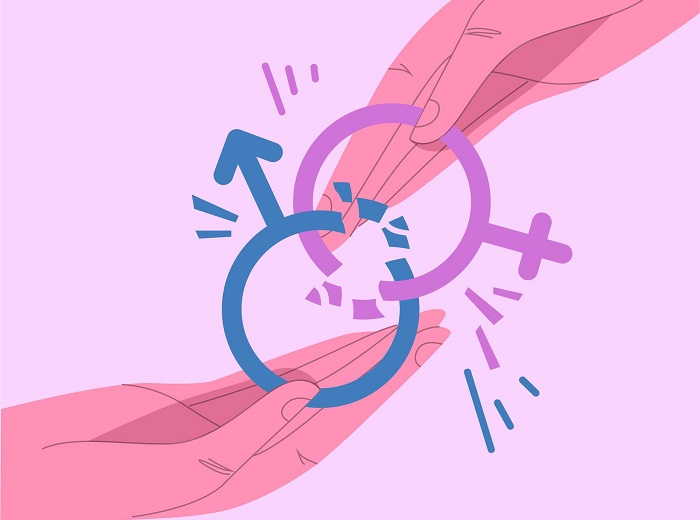
Why does gender matter in marketing?
I will start this part by an example: Women’s World Cup. Some of you might have watched it or you can guess what it looks like only by its name. At first sight, everything looks so professional. Incredible athletes, amazing goals, clean and engaging games. And at the same time outside the field some women are talking about equal pay. However, if we look deep into this event, the first thing you ask yourself is “Why does it feel like everything I’m seeing is commercials for makeup and household cleaning products and diets?”
These commercials are actually a little bit too obvious for being for women. It’s like someone sat down and looked at the tournament and said “Well, this thing is more for women and this is a women’s content. Therefore, this is a great place for me to place all these commercials that are female-centric and maybe not other things. If we think about it as a marketer, I know that I absolutely should not be annoyed about it. This is what marketers are tasked with doing. Building brands with very limited budgets. So, there’s a little bit of an incentive to categorize people in buckets so they can reach their target faster.
If you think about the marketing targets, it’s kind of like a shortcut. They’re using gender as a shortcut to get to their target consumer. The issue is that as logical as that argument seems, gender as a shortcut is actually not great. In this day and age, if you still blindly use a gender-based marketing, it’s bad for business. I’m saying it’s bad business because you’re leaving money on the table for your brands and your products. That’s all because gender is such an easy thing to find in the market and to target to talk about. It actually distracts you from the fun things that could be driving growth from your brands. At the same time, it continues to create separation around genders and perpetuate stereotypes. So, at the same time, this activity is bad for your business and bad for society.
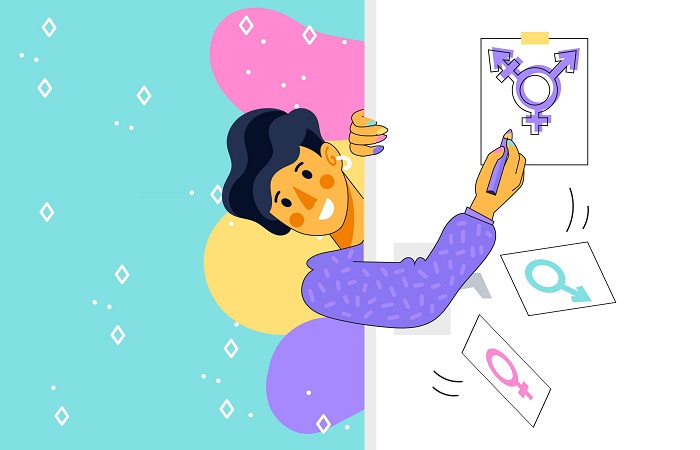
Why would a business engage in gendered marketing?
Gender is one of those things like other demographics that have historically been good marketing shortcuts. At some point, however, we forgot that at the core we were targeting needs around cooking, cleaning, personal care, etc. And we just made it all a bucket and we said: “Men and women are different”. We got used to it and we never challenged it again. It’s insane that we’re still talking about this as a segment when it’s most likely carryover bias. Now, we have enough data to suggest that gender is not the best place to design and target your brands. Unless you’re working in a very gender specific product category. Probably anything else you’re hypothesizing about your consumer right now is gonna be more useful than gender.
Marketing experts’ job is to understand businesses and try to help them find spaces for brands to grow. It’s their belief that if you want to find disruptive growth in the market you have to go to the consumer and take a very agnostic view of the consumer. You have to go and look at them from scratch, remove yourself from biases and segments that you thought were very important. In short, you have to take a look to see where the growth is.
Here’s the tested algorithm: Imagine a person is making a choice about a product or service. In this case, you have a full data of this person. This data contains gender, where they live, their income, their decision-making context, their location, their company, the energy, etc. And you can know even extra things like their attitude, how they feel about the category, their behaviors, etc. In short, imagine you have this big data about a person. Now, according to a statistical tournament we ask this big thing of data:
“So, data! From everything you know about consumers at this point, what is the most useful thing I need to know that tells me more about what consumers need?”
The tournament is gonna have winners and losers. The winners are those variables. Those dimensions that actually teach you a lot about your consumer, that if you know, you know what they need. And there’s losing variables that are just not that practical. This matters because in a world of limited resources you don’t want to waste it on people that actually have the same needs. So, why treat them differently?
According this YouTube video and the marketing consultants’ research, after 200 projects around the world (covering 20 countries or more) in essence they’ve around about a hundred thousand of these tournaments. And no surprise! Gender was very rarely the most predictive thing to understand consumer needs. Gender-marketing can also be bad for business From a hundred thousand tournaments, gender only came out of the winning variable in about five percent of them. This is true around the world. We did this in places where traditional gender roles were a little more pronounced and the conclusions were exactly the same.
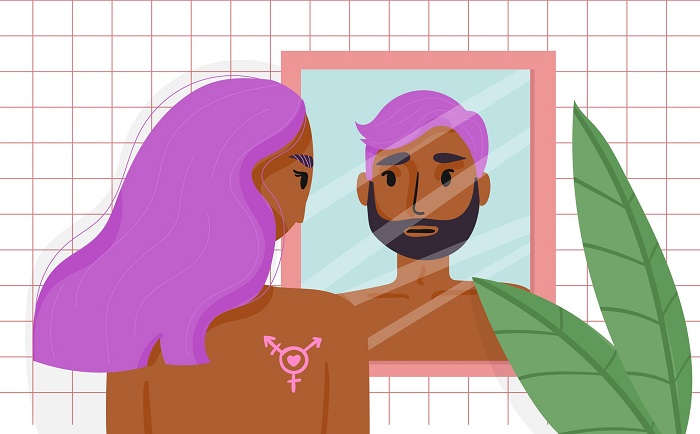
No matter how you’re looking at a consumer. Most likely ANYTHING else is going to be more interesting than gender. There’s probably something very important you need to know about them. And you’re getting distracted because you’re doing everything based on gender. That’s why I say you’re leaving money on the table. Gender is easy. It’s easy to design advertising based on gender. It’s easy to target people online and on TV based on gender. But in the end, that’s not where the exciting growth will come from.
If you’re a food company, it is actually much more interesting to you to know where people are eating, who they are eating with, are they very nutritionally-oriented, etc. All of those things are actually significantly more powerful and useful than knowing gender. And that matters because if you’re putting your limited budget into action, you’re better off creating solutions for different occasions.
Here’s a great example:
The introduction of a new packaging featuring a trans woman on Bud Light is indeed a decision that can be seen as both challenging and potentially risky from a business perspective. Traditionally, many companies have relied on gender-specific marketing strategies to target specific consumer segments, using stereotypes and preconceived notions about gender to sell their products. We can obviously see how gender roles are reflected in the marketing strategy of beer companies, as well. Beer is typically known as a drink ONLY for men. People don’t expect cis women to drink beer, let alone a trans woman. The Bud Light know well that this is risky but not a wrong move to broke the obscenity of women drinking beer.
Later on, many videos of Bud Light consumers went viral hating on the whole brand for the new packaging. And you may think that they regret what they did and it was a failure for them to lose lots of fans. Unlike how it seems like, transphobes showed their real face at this point and Bud Light consumers got larger with LGBTQIA+ members, and in summary, Bud Light consumers got filtered in a real smart way.
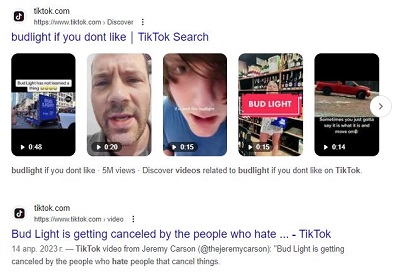

Conclusion
So we have discussed a few examples where we found that gender was not the best place to go. Actually the argument is that at this point, it’s not even a feminist push. It’s just we got used to it and now we know that gender-based marketing is bad for business. We got used to using gender. And it’s important for us to start finding ways to measure other things about consumers than gender. There’s still gonna be appetite and a certain ease around using gender. You have to inquire if this really is the best lens for me to grow.
If you’re an advertising consultant for hire, and hear conversations in a business project about gender targeting. Unless you’re working in a very gender-specific product category, take this as a warning sign. If you keep having these conversations in this age, you will keep perpetuating stereotypes of people. You’re also making people think that men and women are different which is defiantly harmful for your business.
Growth is not easy at all. What makes you think that growth is going to come from what’s going into the market with such an outdated lens like gender? So, let’s stop doing what’s easy and go for what’s right at this point. It’s not just for your business; it’s for society. Take the first step to prevent the gender-marketing which is bad for your business.









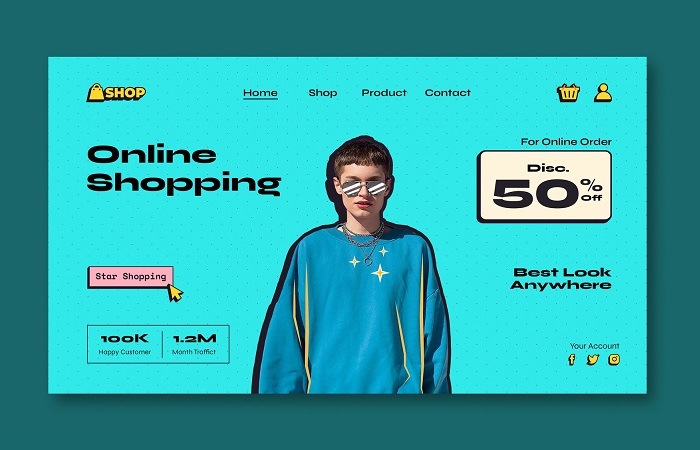

I have observed that over the course of developing a relationship with real estate entrepreneurs, you’ll be able to come to understand that, in most real estate deal, a payment is paid. In the long run, FSBO sellers never “save” the commission. Rather, they try to earn the commission by simply doing a agent’s occupation. In completing this task, they spend their money and also time to carry out, as best they could, the duties of an broker. Those duties include disclosing the home by marketing, presenting the home to all buyers, developing a sense of buyer desperation in order to induce an offer, making arrangement for home inspections, dealing with qualification check ups with the loan company, supervising repairs, and facilitating the closing.